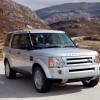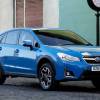
RAC sale – up to 33% off*
• Roadside cover from £5.29 a month†
• We get to most breakdowns in 60 mins or less
• Our patrols fix 4/5 breakdowns on the spot

By Jonathan Crouch
Introduction
Subaru's Outback isn't an SUV but offers most of what that class of vehicle provides in a package that's a little more rugged than your average jacked-up large 4x4 estate. After all, its permanent Symmetrical All-Wheel Drive system will keep you going long after most other all-wheel drive estates, Crossovers and compact SUVs have waved the white flag. In 2015, Subaru brought us a fifth generation 'BS'-series Outback model that was smarter, safer, cleverer, classier and a little more efficient. It might remain a rare choice - but for the right kind of buyer, it's potentially a very good one.
Models
5dr estate (2.0 diesel / 2.5i petrol [SE, SE Premium, Limited])
History
The Subaru Outback. With a history going all the way back to 1995, it was the original off-road-orientated family estate, with an image that, at the turn of the century, placed it comfortably alongside big Volvos and Land Rovers as a preferred choice for the tweed jacketed country set. In more recent times, it's been a rarer sight on our roads - something that back in 2015, Subaru's importers wanted to change with the introduction of this much improved fifth generation 'BS'-series version.
The Japanese brand reckons that this was the original 'Crossover' vehicle. Now this may be true but the way the market now understands 'Crossovers' (as Nissan Qashqai-like SUV-styled family hatches with little off road ability) doesn't fit the Outback's remit at all. With a core market following in wild parts of Australia, America and Asia, it has to be pretty capable in the rough - or at least pretty capable for something that remains a conventional estate car.
The Outback has always been based almost entirely on Subaru's Legacy Tourer estate, though it offers a tougher look and extra ground clearance, both key ingredients for the small but significant market niche of capable all-wheel drive estates that back in 2015 was popularised by cars like Audi's allroad models and Volvo's XC70. It was in response to competition of this sort that Fuji Heavy Industries brand introduced the fourth generation 'BR/BM'-series version of this Outback in 2010, making it bigger and more capable than before. It wasn't enough - for three key reasons. There was the initial problem that early MK4 models couldn't be ordered with the diesel/automatic combination most buyers wanted. Plus a standard of interior quality that even Subaru later admitted wasn't a match for premium rivals. And neither of these concerns were helped by unfavourable exchange rates that made the car look expensive.
Compared to this, the MK5 Outback was a decent step forward. From the beginning, it got the option of the brand's smooth Lineartronic auto gearbox as a smooth, willing partner to the 2.0-litre Boxer diesel engine most customers wanted. This unit was partnered by a 2.5-litre petrol unit mated only to auto transmission - until 2018, when the diesel was dropped. The MK5 Outback was much nicer inside too. And there was smarter exterior styling, sharper handling, lower running costs and greater safety provision, all matched to the same tough, practical 4WD package. The MK5 Outback sold until 2021, when it was replaced by an all-new sixth generation 'BT'-series version.
What You Get
One of the things that's characterised Outback development over the last few generations is the way this car has progressively got a little larger. Back in the Nineties, it was merely a dressed-up, rugged-ized version of Subaru's Mondeo-sized Legacy estate but in more recent times, it's needed to be a little bigger than that. After all, buyers need an incentive to stretch to this car over the brand's already reasonably spacious Forester estate model. And in any case, the company's dealers want this Outback to be able to compete on equal terms with slightly larger rivals like big Volvo estates. So this fifth generation version gained 20mm, both in width and length.
It's in profile though, that the more significant changes become obvious if you're more familiar with earlier Outback models. With this MK5 version, the base of the A-pillar was brought forward by 50mm and there was more rake to the windscreen, along with a smoother, swept-back silhouette. This, combined with extra length and a prominent shoulder line that rises gently from the front bumper before extending to the rear light clusters delivered a more dynamic-looking shape.
It's up-front though, that the biggest improvements were made. Silver highlights run across a dashboard that was offered in a choice of colours and fashioned from high-grade soft-touch materials that even extend to the door armrests. The key feature though is the high-resolution 7.0-inch colour infotainment touchscreen that dominates the centre of the dash. It was standard across the range and allows the driver to access sat nav, audio, phone and information menus with the same swiping and pinching motions you'd use to control a smartphone.
And in the rear? Well though this fifth generation model wasn't very much wider than its predecessor, revisions to the door structure and the trim made it feel as if it was, these changes liberating 30mm more shoulder room, 38mm more elbow room and 67mm more hip room than was available in the previous MK4 version. The car's extra length meant there was 10mm more legroom too, while the fact that the front seats were placed slightly further apart made it a little easier to sit in the middle.
You'd expect the slightly sleeker lines to marginally compromise boot space but in fact, once you raise the tailgate - something you can do electrically on plusher models - there's actually a little more room on offer (559-litres). If you need more space, then flipping the useful levers by the tailgate flattens the 60:40 split-folding rear bench and frees up 1,848-litres.
What You Pay
Please fill in the form here for an exact up-to-date information.
What to Look For
Most Outback owners in our survey seemed very happy with their cars: Subaru models tend to have an impressive reliability record. However, there are a few issues we came across. A few owners mentioned vibrations from the engine under acceleration and some had a small leakage of oil. A few experienced electrical problems, in one case the car's battery dying unexpectedly. In another there was an issue with the start button and the central display. A few owners mentioned that the windscreen cracks easily. And there have been reports pertaining to oxygen sensors which are known to form cracks. This may result in the 'check engine' light illuminating, so watch out for that on your test drive. One owner complained that the 'Eyesight' camera safety system was failing intermittently. Another said his sat nav wouldn't update and that the glow plugs had failed three times in a year. He also mentioned a front wheel alignment that was easily put out by speed bumps. Unlike most four-wheel drive estates, this one may well have been regularly used on rough trails and for towing, so check underneath and look for scratches on the alloy wheels. And for signs of hard use in the estate compartment and on the back seat. And insist as usual on a fully stamped up service history.
Replacement Parts
(approx based on a 2016 Outback 2.0 diesel ex Vat) Spare parts are priced a degree or three above what you'd expect to fork out for Volkswagen or Audi bits but Subaru counters that you'll need to buy them less often. An air filter is around £11. An oil filter is around £5. Front brake pads are around £56: rears around £35. Front brake discs are around £90.
On the Road
Paul Hogan of Crocodile Dundee fame was the face that originally launched this car back in the Nineties and sure enough, it's easy to imagine his grizzled face behind the wheel of one of these pounding across the Australian Outback. Or at least amongst some of its bumpy but passable trails. As with the MK4 Outback, this MK5 model offers 200mm of ground clearance beneath the bodywork. Not enough to tackle anything too rocky but certainly better than pretend off roaders like Toyota's RAV4 or more similarly-orientated 4x4 estate car rivals from this period like Skoda's Octavia Scout or Audi's A4 allroad.
To be fair, cars like this one aren't bought to tackle the Rubicon trail but to deal with muddy cart tracks and slippery backroads, with or without heavy trailers in-tow. All of which is well within this Subaru's remit thanks to its Symmetrical All-Wheel Drive system. This usually splits power 50:50 between front and rear axles in manual models - or 60:40 if you've gone for a version with the Lineartronic CVT automatic version. But it's also intelligent enough not simply to leave it at that, instead cleverly shunting power around to the wheel that can best use it in any given slushy situation. In short, an Outback is better off the tarmac than a car of this kind has any right to be.
Which wouldn't be much good were this Subaru to be a poor companion on road where of course, it'll spend nearly all of its time. Fortunately, the on-road driving dynamics of this car were much improved with this Mk5 model. Much of this was down to changes to the spring and damper settings that work with the stiffer body to allow this Outback to change direction more quickly than before, with less body roll.
To be frank, we've always been a little surprised that previous Outback models didn't handle a little more like this. After all, Subaru's basic approach to design is certainly a dynamic one thanks to the low centre of gravity offered by the deep placement of the Boxer engines provided up-front. There are actually two from which you can select with this MK5 Outback, though for most buyers, the default choice will lie with the 150PS diesel unit sold until 2018. For many customers, it'll be even more significant to learn that the towing capacity of the diesel version was increased for this MK5 design - to 1,800kgs. That still can't match the 2,000kg towing capacity of the petrol-powered Outback though, which might be one reason why this 2.5i green pump-fuelled variant remained in the line-up. You get slightly more power than you do from the diesel - 175PS - enough to get you to 62mph from rest in 10.2 en route to 130mph.
Overall
If you really don't want an SUV but really need one, there are plenty of plush jacked-up 4WD estate cars from the 2015-2021 period that can claim to offer a realistic alternative. Yet few of them would last long if regularly used up-hill, down-dale on the average rutted farm track. Here's an exception. This fifth generation 'BS'-series Outback may not be able to replace a fully-fledged off roader for those living halfway up a mountain peak but for a vehicle of this kind, it really is extraordinarily capable. Previous versions of this model were just as good, but weren't really large or plush enough to compete against the Volvos and Audis that represent this car's most natural competition. That changed a bit here.
True, there are still more dynamically able models of this kind from this period, with smarter cabins and trendier badges. As an overall package though, this Outback became a stronger contender than ever before in MK5 form. It's always been the most capable car of its kind when conditions are at their worst, but in 'BS'-series form, it became a much stronger everyday choice too.

![Subaru Outback [BS] (2015 - 2021) used car review](https://d1ix0byejyn2u7.cloudfront.net/drive/images/made/drive/images/remote/https_d2yv47kjv2gmpz.cloudfront.net/filestore/3/6/5/2_e064bec311cfba0/a123c50bef332748bfd21fd0ed3d9b61/2563_3e88ae6d02bfaab_794_530_70.jpg)





